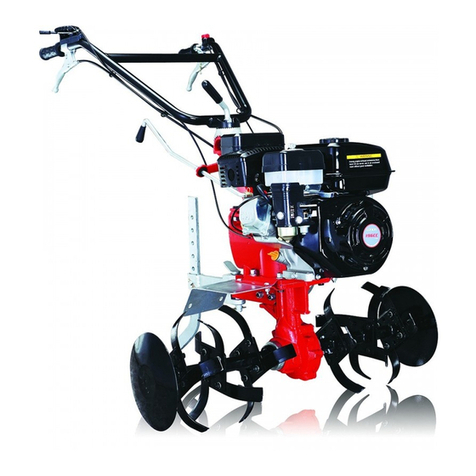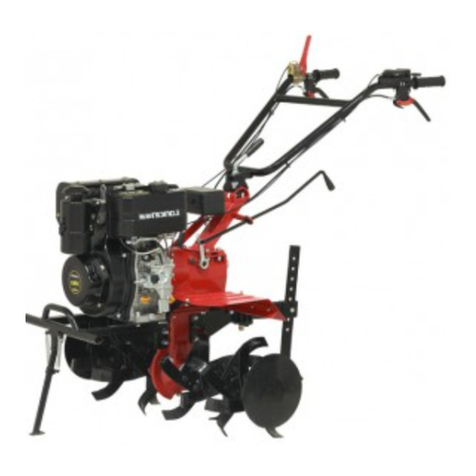
.2.
3) Take extra care when fueling the engine outdoors; never try to fuel the engine indoors!
4) Before starting, tighten the fuel tank cap and wipe off any fuel spilled out!
e) Never try to make any adjustment when the engine is running!
f) For any operation or work on the machine, for example, preparation and maintenance
of the machine, wearing a pair of safety glasses is necessary.
3. Operation
a) When starting the engine, the shift lever shall stay in the neutral position. The
operator’s hands and feet are not allowed to approach revolving parts or to be under such
parts.
b) When operating the machine on (or while crossing) a cobbled road, sidewalk, or
highway, stay alert to the traffic conditions to notice any potential traffic risk! Never use the
machine to carry any passenger!
c) If the machine bumps against any foreign thing, please shut off the engine
immediately, and thoroughly check whether the tiller is damaged, if so, repair it before
restarting and operating it.
d) Always pay attention to the surrounding conditions to avoid slipping down, or
dropping.
e) If the machine shows any abnormal vibration, shut off the engine without any delay!
Check to find the reason, it’s important because abnormal vibration normally is harbinger of






























